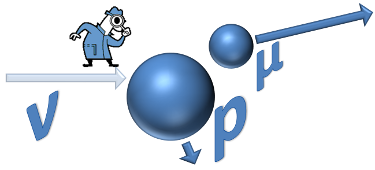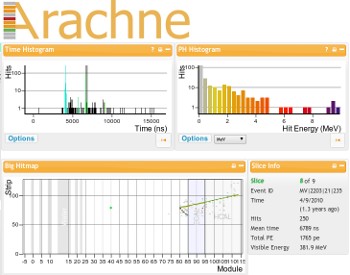In these exercises, students will examine events in which a neutrino scatters from a neutron inside a nucleus, and in the energy and momentum conserving reaction which produces a proton from the neutron while the neutrino changes itself into a muon.
By measuring the momentum and energy of the final muon and proton, students can infer properties of both the neutrino that initiated the collision and the neutron target.
Students can explore these events with or without quantitative analysis. From a large sample of events, students can see the principles of classical elastic scattering applied in a particle physics environment, and show that the laws of physics work for particles as well as they do for billiard balls. Along the way, students may discover some surpising properties of the target neutrons inside the nucleus.
Explore the materials that detail ideas for bringing this activity into your classroom
The sample event above is an example of a neutrino collision that produces muon and a proton. The incoming neutrino is not visible in the detector before it collides with a muon inside a carbon nucleus in the scintillating material of the detector. Students can click on the muon and the proton tracks in the display and measure the momentum and the kinetic energy of these subatomic particles, and can apply conservation of energy and momentum to determine the properties of the neutrino, in this case a particle with 2.1 Giga-electron volts of kinetic energy, and the target neutron.




